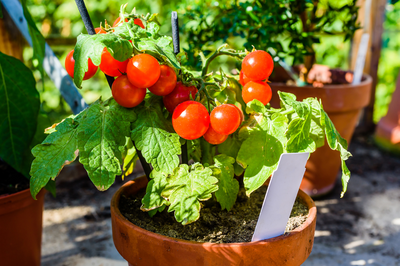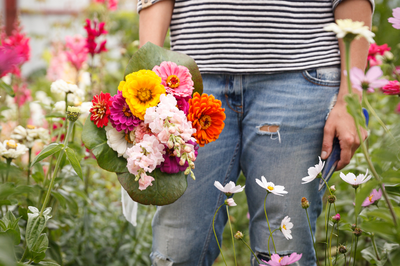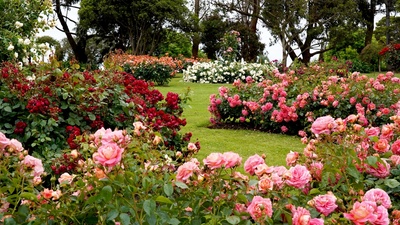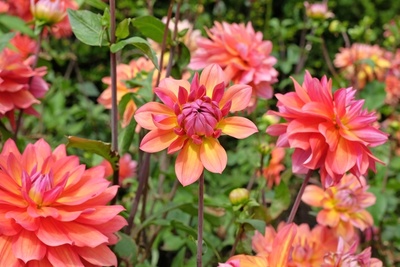
With its gorgeous tangles of stems and fragrant flowers tumbling over sunny walls in summer, honeysuckle is the classic cottage garden plant. But there’s more to honeysuckle than you might imagine. There are scented and unscented honeysuckles, shrubby honeysuckles and even honeysuckles that flower in the depths of winter. One thing’s for certain, there’s honeysuckle for every garden.
Climbing and shrubby honeysuckles
Honeysuckles fall into two groups – climbing and shrubby honeysuckles. In North America, the long, tubular flowers are often pollinated by hummingbirds, so these plants tend to have brightly coloured but unscented flowers. Here in the UK, long-tongued butterflies and moths do the job of pollination (although bees will sometimes burrow sneakily through the base of the flowers to steal nectar), hence our native honeysuckle Lonicera periclymenum produces flowers that are paler but with a gorgeous heady scent to attract insects.
Shrubby honeysuckles include Lonicera nitida, a dense, evergreen shrub that’s an excellent alternative to box hedging for gardens plagued by box moth caterpillars. Winter-flowering honeysuckles Lonicera fragrantissima and Lonicera x purpusii are also shrubs, blending into the background in summer but producing amazingly sweet-scented flowers in late winter.
Caring for honeysuckles
Climbing honeysuckles are woodland plants, so are happiest with their roots in shade and their stems climbing into the sun. They grow well in humus-rich, well-drained soil. Shrubby honeysuckles will grow in sun or partial shade, with the winter-flowering varieties preferring a sheltered spot.
All honeysuckles appreciate being mulched with organic material such as compost and fed with a general fertiliser in spring. Powdery mildew can be a problem for honeysuckles in summer, especially if they are stressed by lack of water, but mulching will help by reducing water loss from the soil.
How to prune honeysuckle
Summer-flowering climbing honeysuckles don’t need regular pruning – simply cut back over-long shoots in spring. Cut early-flowering climbing honeysuckles back by one-third after flowering.
Prune winter-flowering shrubby honeysuckles after flowering, removing old or weak stems and shortening one in every three older branches.
Trim evergreen shrubby honeysuckles every 2-3 months from spring to autumn to keep them looking neat and tidy.
Scented honeysuckles
- Lonicera periclymenum ‘Graham Thomas’ – a late summer-flowering, deciduous variety with fantastically fragrant creamy yellow flowers
- Lonicera periclymenum Serotina – another deciduous honeysuckle with scented purple and white flowers.
- Lonicera fragrantissima – a winter-flowering shrubby variety that does best against a sheltered sunny wall.
- Lonicera x purpusii ‘Winter Beauty’ AGM – slightly tougher than L. fragrantissima, with equally delectably-scented flowers in winter.
Evergreen climbing honeysuckles
- Lonicera japonica ‘Halliana’ – a vigorous climber with masses of yellow and white flowers from late spring to late summer
Honeysuckles for hedging
- Lonicera nitida ‘Baggesen’s Gold’ – the pale gold evergreen leaves make a striking hedge, taking on a bronze tone in winter
Whether you’re looking for colourful flowers, gorgeous scent or evergreen leaves, there’s honeysuckle to suit your needs. Pop into our garden centre to see what’s in stock now.




